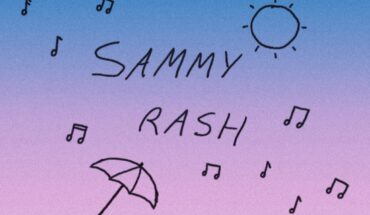BY SIDONIA CANNON
I want to spin around on my tiptoes in a flowy dress and send sparkles dancing across the room. I want to stand on the steepest gray cliff, salty air blowing through my hair, and scream out at the surging ocean. I want to share a secret with someone behind the mall. I want to have my heart shattered into a thousand pieces and then carefully put back together.
I’m not the only one who’s loving Taylor Swift’s eighth studio album. “Folklore” has been number one on the Rolling Stone and Billboard top 200 albums charts. Swift’s album has been at the top of the Rolling Stone chart for more consecutive weeks than any other album in the chart’s history. It’s the first album by a woman to spend four weeks on top in five years. Additionally, Swift was the first artist to have an album and song (“Cardigan”) simultaneously debut at number one.
So, why is “Folklore” special? For one, it’s a narrative album. Swift told fans she hid Easter eggs in the lyrics and created “character arcs [and] recurring themes.” The album contains a collection of three songs she refers to as “The Teenage Love Triangle.” All her previous works are marvelous, but this album is especially fun because we Swifties are hunting for connections and creating theories about which songs go together.
I personally believe “Cardigan,” “Illicit Affairs” and “Betty” make up the love triangle, but I’ve had lengthy debates with friends who believe “August” is one of the three. There are recurring mentions of cobblestones, cardigans and front porches in each song. Maybe they’re right, maybe I’m right, maybe none of us are right. The important thing is that despite not being able to attend a concert in person, Swift has brought fans together with the album instead.
“Folklore” was a surprise album written and released during a time in which many, Swift included, were reminded of their mortality. In her Instagram post announcing the album, Swift reflected that normally she “would’ve overthought when to release this music at the ‘perfect’ time, but the times we’re living in keep reminding [her] that nothing is guaranteed.”
A few of Swift’s songs touch on the themes of hopelessness and despair felt by those in quarantine. “Epiphany” is especially a sign of the times with lyrics such as “watch you breath in, watch you breathing out” and “hold your hand through plastic now” which reference the symptoms and new socially-distanced reality associated with COVID-19. Musically, the song is on a constant rise, yet it never reaches the peak. It’s as if we’re waiting for things to get better, but we’re not out of the woods yet.
Additionally, “This is Me Trying” touches on the mental health struggles that have accompanied isolation. The song opens with “I’ve been having a hard time adjusting.” She continues this theme of anxiety, singing: “Pulled the car off the road to the lookout / Could have followed my fears all the way down.” Despite these worrisome lyrics, the title and overall message of the song are cautiously optimistic.
Thus, the album is much more socially relevant compared to her other albums which focused on broader themes of love and heartbreak. Although the previous albums are still relatable, “Folklore” serves as a cultural artifact.
Additionally, “Folklore” reminds us that even superstars struggle too. It’s as if she’s singing us a gentle lullaby as we drift into childlike tranquility. Many students (myself included) went back to our hometowns in March, running to the safety of our mothers’ arms and the comfort of a mattress that wasn’t an extra-long twin. I spent many years in that bedroom listening to Taylor Swift, and it was comforting to return to this old habit. I was able to escape the real world and travel back to a time of simplicity and innocence.
Swift sings about a childhood friend and their plans to run away together in “Seven.” She holds our hand as we swing in trees and jump through weeds, lost in a whimsical memory. She also pulls us along into a state of nostalgia. Listening to “The 1,” we look fondly back at a high school sweetheart, wondering what could have been, yet hoping we don’t run into him at the grocery store.
These ideas climax in the title of the album, “Folklore.” Swift describes it as a “photo album full of imagery, and all the stories behind that image.” She crafted stories from various points of view and drew upon ideas from fairy tales and children’s books. Taylor Swift captured the universal human heart in a way that none of her other albums have before.
Now that she’s shared with us, we must share these stories and feelings with others. That’s what we do with folklore, after all.




